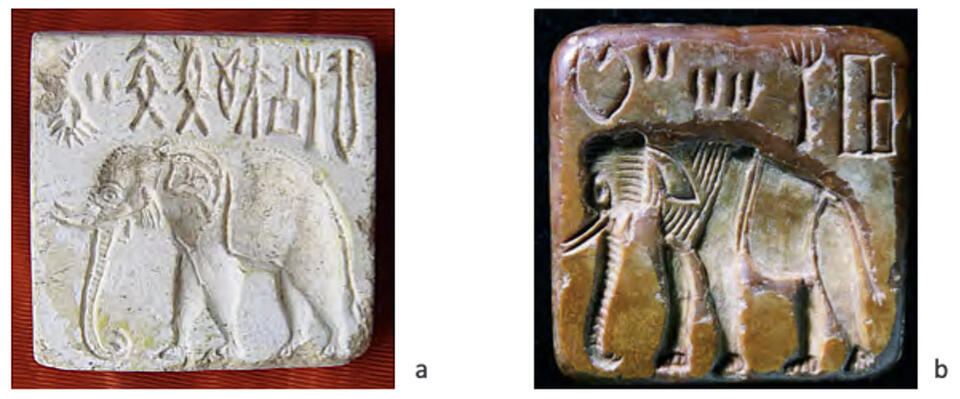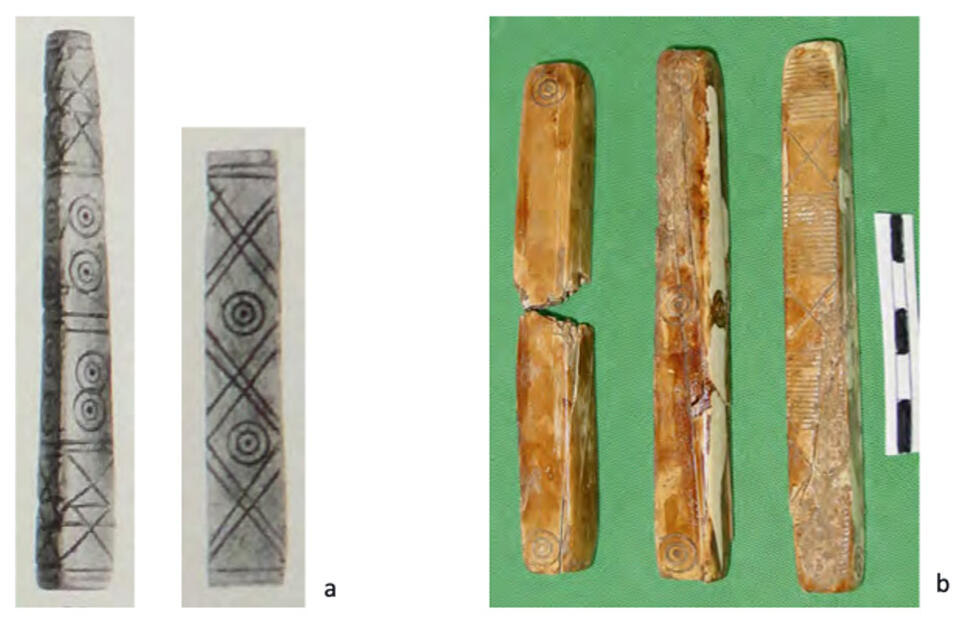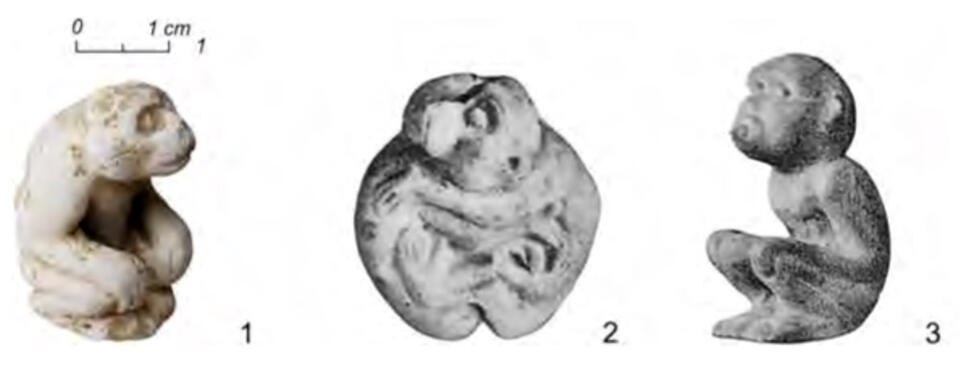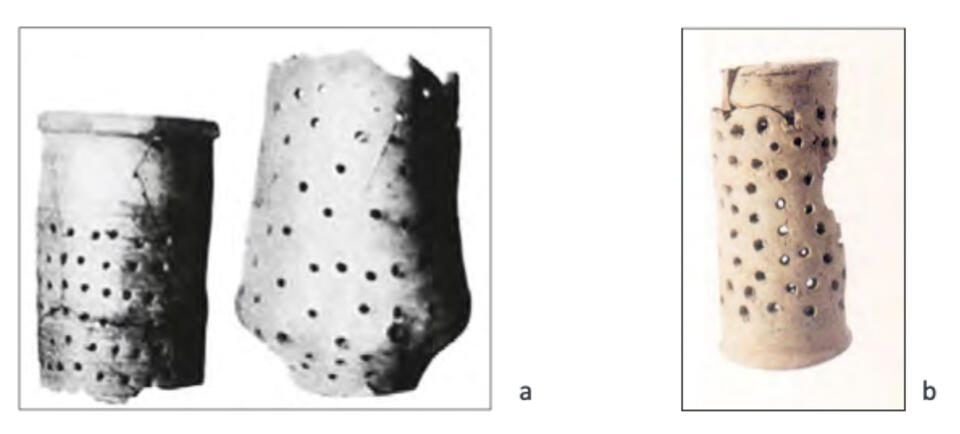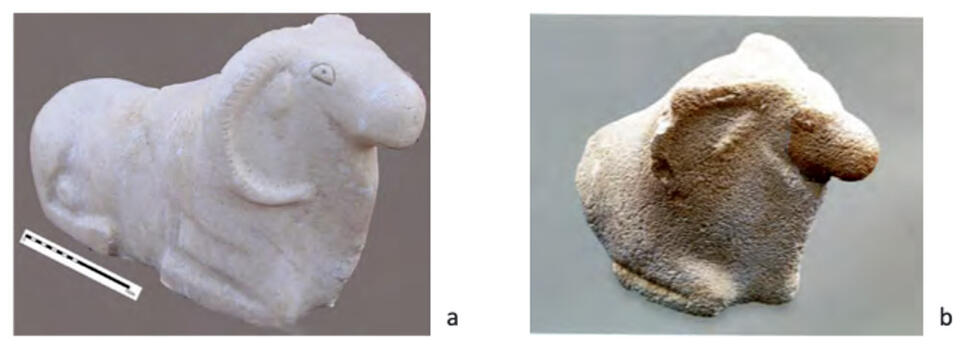One of the most interesting trends to follow around ancient Indus studies is the increasing amount of research and knowledge of neighboring cultures and civilizations in time and place: the ancient Arabian Gulf, Mesopotamia, Central Asia (not to mention South and East India, even Southeast Asia). The volume Urban Cultures of Central Asia from the Bronze Age to the Karakhanids pulls together a large amount of information from one of these regions (and is free open-access). Within it, the surprising findings at Gonur Depe in modern Turkmenistan seem to have the most direct connections with ancient Indus civilization, as the above images so obviously suggest.
Gonur Depe ("Grey Hill" in Turkmenian) along the ancient delta of the Murghab River, not far from the Afghan border, seems to have been settled during three main periods: 2300-1900 BCE; 1900-1700 BCE, a reconstruction after what may have been a large fire; and 1700-1500 BCE, after which it was apparently abandoned. The settlement was on the right bank of the ancient river, like ancient Indus settlements. There were also water reservoirs (with filters for cleaning connecting them, p. 39), smaller settlements in the area, graveyards with remains "confirming high social status of the buried" (p. 39), ritual animal burials, workshops for smelting bronze, possible palaces and much more. The site has been excavated from 1974 through recent times by a variety of archaeological teams, many under the direction of the pioneering Russian archaeologist Viktor Sarianidi (1929-2013), and including nationals from Turkmenistan, Switzerland, Germany and others.
"Gonur's culture shows many similarities with those of the Near and Middle East and Indus . . .. The method of burning the minerals [used in beads and mosaics] in order to facilitate their handling is known at monuments in the Indus Valley civilisation, starting from the Neolithic (Vidale 1989). Harappan seals were produced mainly from steatite after it had been fired (Masson 1977:149)" (p. 48). There is little doubt that there were direct connections with ancient Indus cities; the author who has long worked at the site writes "Victor Sarianidi underlined the fact that the trade routes of the so-called Silk Road began to develop long before the silk trade. They started to be used in the Bronze Age, if not earlier. It was through the contact and interaction of various cultural traditions, and the peaceful coexistence of different economic-cultural types in Central Asia in general, and Turkmenistan in particular, that people had the opportunity to enrich one another with the latest knowledge and technology, and moreover to create a brilliant centre of world culture (Sarianidi 2012b:157)" (p. 53).
A fascinating and in-depth introduction to an area little known by archaeologists and the general public, but with profound implications by how we understand the network of ancient civilizations that emerged in Asia many thousands of years ago.
Images:
1. Seals with elephant images. a: from Gonur Depe, Turkmenistan (© Margiana archaeological expedition); b: Mohenjo Daro, Indus Valley (photo by J. Lyytikka; courtesy National Museum of India, accession no. 134).
2. Ivory sticks for "future telling" or games. a: from Mohenjo Daro (after Marshall 1931: P. CXXXII, 22, 27); b: from Gonur Depe (Area 5, room 115 ; © Margiana archaeological expedition).
3. Monkey figurines. 1. a: from Gonur Depe, Turkmenistan (tomb 4150); 2-4: from Mohenjo Daro (2, 4 after Mackay 1938/1939: Pl. C; 3 after Mackay 1931: Pl. XCVI; Fig. 5III also published in Sarniadi/Boroffka/Dubova 2014: 137).
4.Perforated jars. a: from Mohenjo Daro (after Marshall 1931, vol. 1: 289): b: from Gonur Depe necropolis (© Margiana archaeological expedition).
5. Stone ram sculptures. a: from Gonur Depe, Turkmenistan (© Margiana archaeological expedition); b: Mohenjo Daro, Indus Valley (photo by J. Lyytikka; courtesy National Museum of India, accession no. 134).

